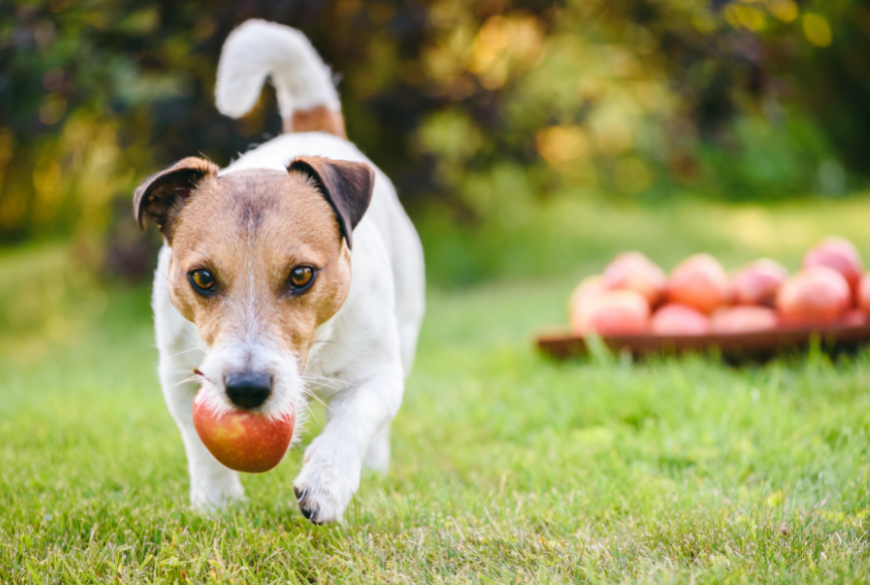If you are a dog parent, you may have wondered whether your furry friend can enjoy apples as much as you do. The answer is yes, dogs can eat apples in moderation and it can even offer them some health benefits.
Apples are packed with nutrients such as fiber, vitamins A and C, and antioxidants that can help support a dog’s overall health. Fiber is particularly important for digestive health, and it can also help regulate blood sugar levels in dogs. Vitamin A supports a dog’s vision, while vitamin C helps to boost their immune system. The antioxidants in apples can help to reduce inflammation and fight off diseases.
However, while apples can be a healthy snack for dogs, they should always be given in moderation and prepared properly. Apples contain natural sugars that can cause gastrointestinal upset in dogs if they eat too much. In addition, the seeds of the apple contain trace amounts of cyanide, which can be toxic to dogs in large quantities. Therefore, it is important to always remove the seeds and core before giving apples to your furry friend.
When preparing apples for your dog, make sure to wash them thoroughly to remove any pesticides or dirt. Cut the apple into small pieces, removing the seeds and core, and feed them in moderation as a treat or snack. It is also a good idea to introduce apples slowly into your dog’s diet, to make sure that they don’t have any adverse reactions to this new food.
It is also important to note that not all dogs may enjoy apples. Some dogs may have a hard time digesting apples or may simply not like the taste. In such cases, it is best to avoid feeding your dog apples and try offering other fruits or vegetables instead.
Here are some tips and do’s and don’ts to keep in mind when feeding your dog apples:
Tip #1: Remove the Core and Seeds Apple seeds contain trace amounts of cyanide, which can be harmful to dogs in large quantities. Always remove the core and seeds before giving apples to your dog.
Tip #2: Cut Apples into Small Pieces To make it easier for your dog to digest, cut the apple into small pieces before giving it to them. This will also reduce the risk of choking or digestive issues.
Tip #3: Wash Apples Thoroughly Before feeding your dog apples, make sure to wash them thoroughly to remove any pesticides or dirt that may be on the surface.
Do: Introduce Apples Slowly If your dog has never had apples before, it’s important to introduce them slowly to avoid any potential stomach upset. Start by giving your dog a small piece of apple and observe their reaction.
Do: Offer Apples in Moderation While apples are a healthy snack, they still contain natural sugars that can upset your dog’s stomach if given in excess. Offer apples as a treat or snack in moderation, and make sure to balance their diet with other nutritious foods.
Do: Monitor Your Dog’s Reaction After giving your dog apples, monitor their behavior and digestion to ensure that they’re not experiencing any adverse reactions. If your dog experiences vomiting, diarrhea, or other signs of discomfort, stop giving them apples immediately and consult with your veterinarian.
Don’t: Feed Your Dog Apple Pie or Other Desserts While it may be tempting to share a slice of apple pie or other apple-based desserts with your dog, these treats are often high in sugar and can be harmful to their health. Stick to plain, fresh apples instead.
Don’t: Give Your Dog Spoiled or Moldy Apples If you notice any signs of spoilage or mold on your apples, do not give them to your dog. Spoiled fruit can cause digestive upset and other health issues.
In conclusion, apples can be a healthy and tasty treat for dogs when given in moderation and prepared properly. They offer several health benefits and can help to support your dog’s overall well-being. However, it is important to always remove the seeds and core, and to introduce them slowly into your dog’s diet. As always, it is best to consult with your veterinarian before making any changes to your dog’s diet.



